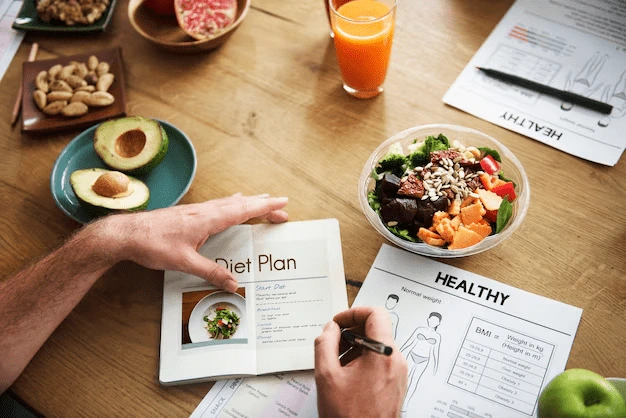
If you’ve ever felt like your body just isn’t responding the way it used to — maybe you’re holding on to stubborn belly fat, struggling with low energy, or finding it tough to lose weight no matter what diet you try — the issue might not be your willpower but could be something deeper routed. It could be your metabolism. More specifically, your metabolic flexibility.
Metabolic flexibility is your body’s ability to switch smoothly between using carbs and fats for energy. Think of it like a hybrid car that can run on electricity or gas, depending on what’s available. When your metabolism is flexible, it adapts quickly to different types of fuel — whether you’re eating a carb-heavy meal or fasting for a few hours. This flexibility is super important not just for weight loss, but for energy, focus, blood sugar balance, and overall well-being.
So how do you eat to support this kind of metabolic flexibility? More and more nutritionists are moving away from strict diet rules and focusing on smart, adaptable eating patterns. And we believe in the same too. And the best part? You don’t have to cut out your favourite dishes — in fact, you can build a highly effective and sustainable eating plan around them.

Let’s start with the basics. If you’re looking for the best diet plans to lose weight, it’s not about choosing between keto, low-carb, or high-protein. It’s about balance — and flexibility. We often recommend cycling your macronutrients, which means you don’t eat the same ratio of carbs, fats, and protein every single day. Some days might be higher in carbs (especially on workout days), while others are more focused on protein, healthy fats and fibre. This gives your body the practice it needs to efficiently use different fuel sources.
Protein is another big player when it comes to supporting your metabolism. Not only does it keep you feeling full, but it also protects your muscle mass — which is crucial because more muscle means a faster resting metabolism. That’s the reason why we emphasize on getting enough protein in each meal when providing the best diet plans to lose weight.
Meal timing also have a major role to play more than we realize. Intermittent fasting has been shown to improve insulin sensitivity and fat burning, especially belly fat. For some people, simply eating all their meals within an 8-10 hour window can make a noticeable difference. Pair that with daily movement — even something as simple as a 30-minute walk — and you’re on your way to finding the fastest way to lose belly fat without drastic measures.
Now, let’s talk about making this work in real life — especially if you’re someone who loves Indian food (like most of us do). The idea that Indian cuisine can’t be healthy or metabolic-friendly is a myth. In fact, when done right, a balanced Indian diet is full of fiber, antioxidants, healthy fats, and plant-based protein.
Picture a day that starts with moong dal chilla filled with paneer, paired with mint chutney. Lunch could be brown rice or phulkas with a hearty vegetable curry and a bowl of dal. Dinner might include grilled paneer or tofu with stir-fried veggies and a small bowl of curd. Snacks? Roasted makhana, sprouts chaat, or soaked almonds. It’s simple, wholesome, and surprisingly effective when tailored correctly.
Of course, all bodies are different — and that’s why working with a professional like us makes such a difference. The best dietitian for weight loss in India won’t give you a generic meal plan. Instead, we look at your blood work, your digestion, your hormone levels, and your lifestyle. Then we help you create a plan that works with your body — not against it. Thanks to technology, we now offer virtual consultations, so you can work with us and get a customised plan, wherever you live.
And let’s not forget movement. No diet can do all the work alone. Strength training helps preserve muscle and increase fat-burning, while low-intensity cardio (like brisk walking or cycling) encourages your body to burn fat more efficiently. HIIT workouts — short, intense bursts of movement — can also train your metabolism to switch fuel sources quickly. When you combine a thoughtful diet with consistent movement, that’s when you unlock the fastest way to lose belly fat — and keep it off for good.
So, what’s the takeaway here? If you’re serious about getting healthy and staying that way, metabolic flexibility should be your goal — not just a lower number on the scale. You want a body that adapts, performs well, and feels good, whether you’re feasting with family on the weekend or powering through a busy Monday with limited time to eat.
Start by focusing on whole, unprocessed foods. Think seasonal veggies, lentils, nuts, seeds, and traditional grains like millets and brown rice. Get enough protein. Don’t fear healthy fats. Eat within a time window that works for your lifestyle. And most importantly, stop thinking you need to follow a strict, one-size-fits-all diet. The best diet plans to lose weight are flexible, nourishing, and sustainable.
If you’ve been feeling stuck, it might be time to get some expert guidance. We can help you stop the guessing game and finally build a plan that works for your body. And if you’re committed to eating better, moving more, and listening to your body, metabolic flexibility will come naturally — and bring lasting results with it.
Because at the end of the day, weight loss isn’t just about looking good. It’s about feeling better, thinking clearer, aging slower, and living life with more energy. And that starts with a metabolism that works for you, not against you.
I’d love to learn more about you and how we can work together to get our healthy meals on the table.